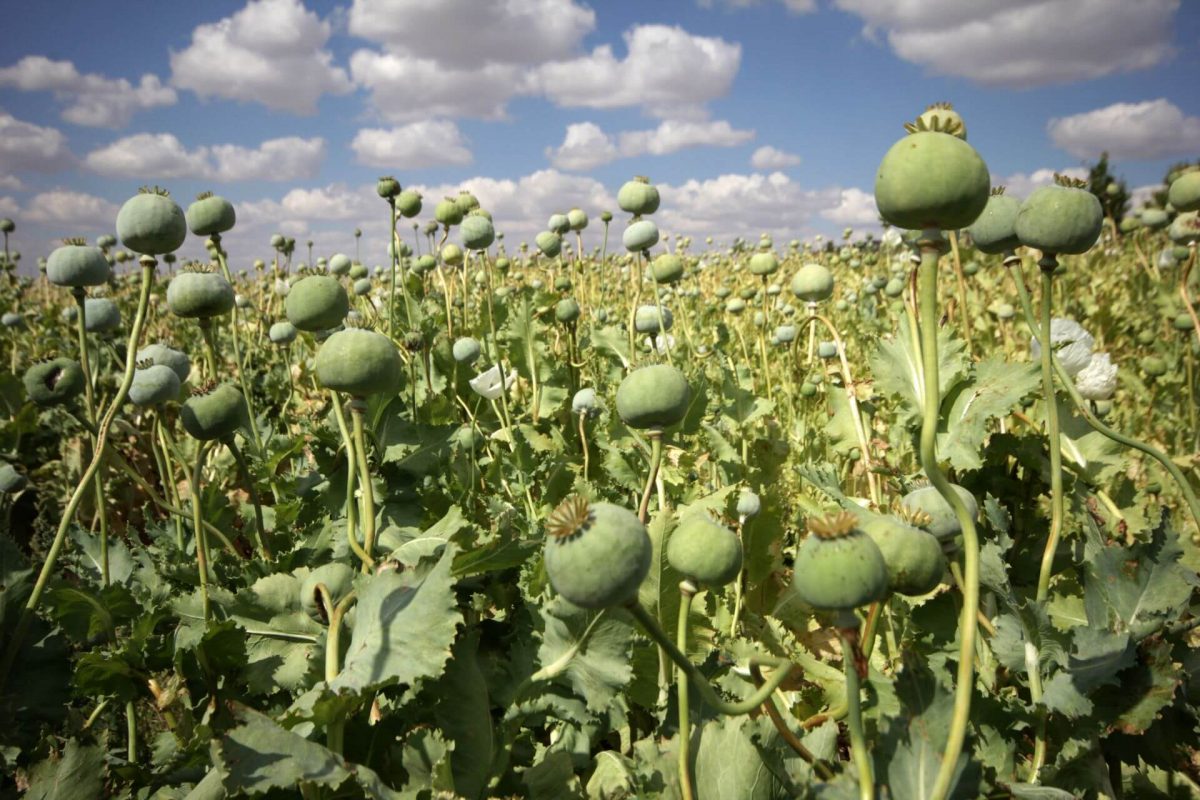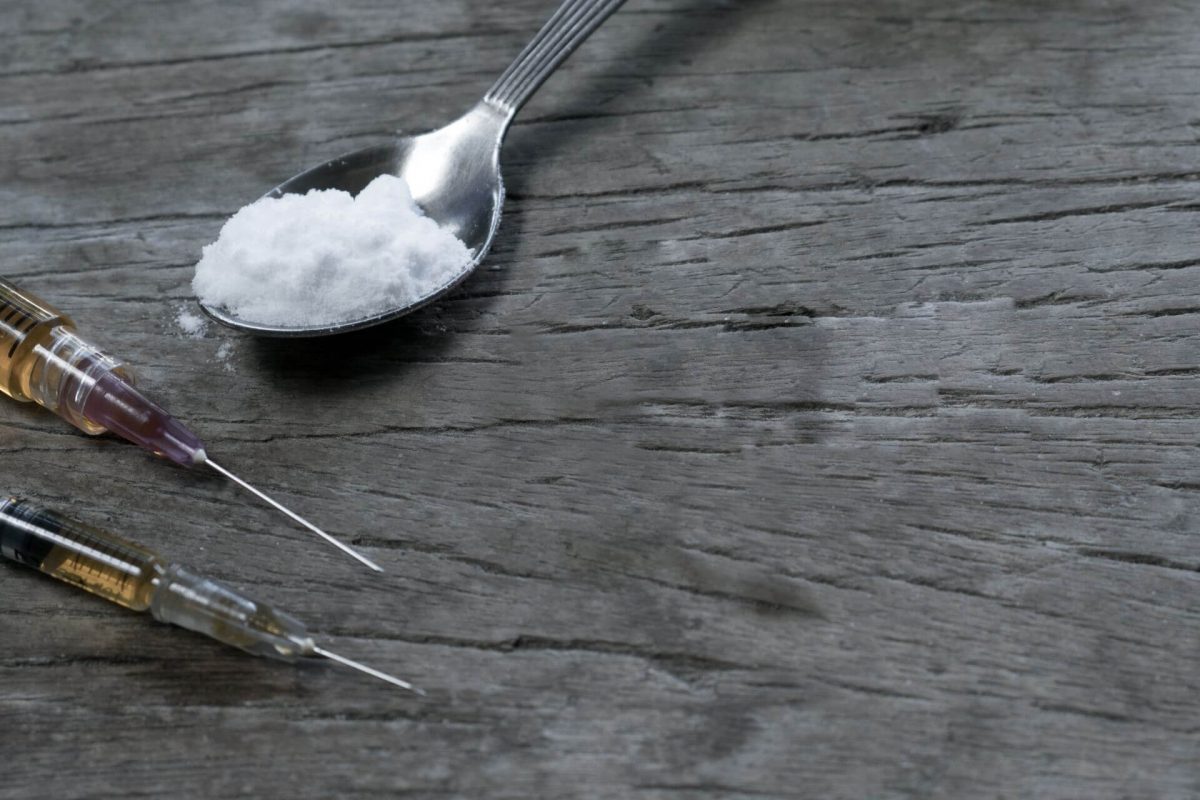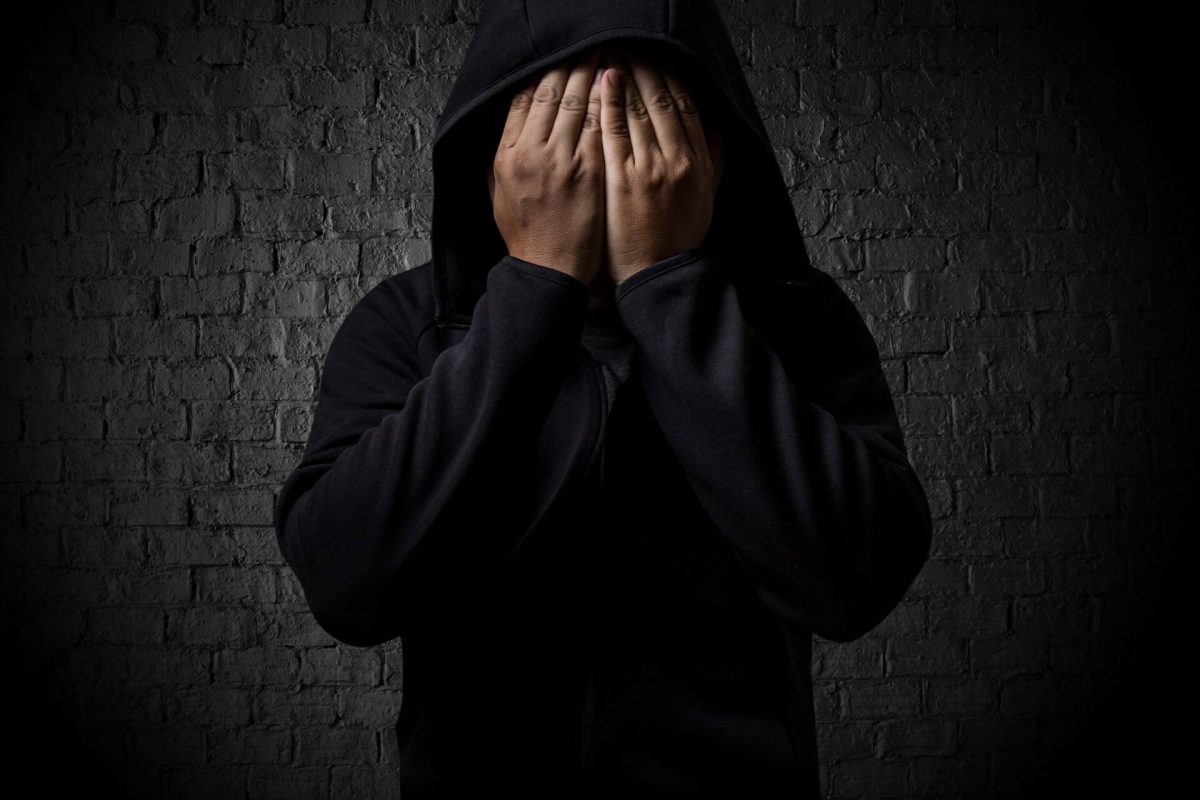Heroin is a highly addictive opioid. It is made from naturally occurring morphine extracted from latex sap in opium poppy seeds. Heroin is one of the most challenging drugs to quit and is responsible for over 70 000 overdose deaths every year in the United States alone.
Find out more about how heroin is made, how heroin addiction develops, warning signs of abuse, and how heroin addiction is treated. The more you know about this life-threatening drug, the better.
How is heroin made?
Heroin is a product of morphine extracted from opium seeds in the pods of mature poppy plants (Papaver somniferum). Opium poppy plants are grown in Southeast and Southwest Asia, Afghanistan, Colombia and Mexico.
The poppy seeds produce a milky latex sap containing narcotic alkaloids, including morphine and codeine. The morphine is acetylated (treated with chemicals) to create heroin, otherwise known as diacetylmorphine.
Morphine is extracted from the opium pods using diluted acid, and then the solution is re-activated with other acids to create heroin. Heroin is basically natural morphine with added chemical compounds from the acetyl group.
Did you know?
Professional sportspeople should avoid eating bagels covered in poppy seeds. The seeds won’t make you high, but the narcotic compounds can be picked up in very sensitive urine drug tests.
The history of heroin

Heroin production dates back to 1898 when Bayer Pharmaceuticals in Germany produced the opium-based drug to treat tuberculosis and other respiratory diseases. It was also marketed as a “non-addictive” remedy for morphine addiction. The brand name was taken from the German word heroisch, meaning heroic, powerful, potent or strong.
At the time, heroin was lauded as a wonder drug, but it wasn’t long before heroin addiction became a bigger problem than morphine addiction.
Another twist in the tragic evolution of the opioid epidemic dates back to 1937 when German scientists developed a drug called Dolphine, later renamed methadone. This drug was marketed to treat heroin addiction but the cure soon proved to be more addictive than the opioid drug.
The death rate of heroin addicts had skyrocketed by the late 1990s, and scientists started sounding alarm bells over its highly addictive properties. A total ban on heroin production was passed in 1924.
Heroin is now classified as an illicit drug, and penalties include fines, driving disqualification, imprisonment and rehabilitation orders. Tragically, this hasn’t stopped the drug underworld from producing the illegal street drug, trafficking it across borders and getting it into the hands of young people. Reports indicate that over 60 percent of people who abuse opioids are between 15 and 24 years.
Heroin is now produced in clandestine jungle kitchens and cut or laced with harmful additives by every dirty dealer along the supply chain.
Did you know?
Morphine and codeine were sold as over-the-counter cough syrups and teething remedies in the late 1800s and early 1900s. Young children infected with tuberculosis and other respiratory diseases became opiate addicts.
How do people use heroin?

Heroin is injected, snorted, sniffed or smoked. All four methods wreak havoc with your health, over and above the high risk of overdose and death. Injecting heroin increases the risk of popped or collapsed blood vessels and contracting hepatitis or HIV from shared needles. Snorting, sniffing or smoking heroin increases the risk of perforated nasal septums and mouth, nose and throat cancer.
Heroin users are typically portrayed injecting heroin into their veins in dark, dingy places. However, snorting heroin powder or sniffing it in liquid form has become more common in recent years. It’s more convenient, less risky, and there’s less of a social stigma associated with snorting or sniffing the drug.
Snorting or sniffing heroin is safer but not fast enough for some users, which is why chronic heroin addicts move on to injecting the street drug. The absorption process from nose to lungs takes longer, and it takes five to ten minutes to feel the heroin high. The high from injecting or smoking heroin is instantaneous.
What is speedballing?
Heroin mixed with crack cocaine is called speedballing. It’s street slang for combining two narcotics to produce a powerful rush of dopamine, euphoria and energy. Speedballing intensifies and lengthens the high you’d get from either drug.
Mixing cocaine and heroin is extremely dangerous because the drugs work against each other and wreak havoc with your central nervous system. Cocaine is a stimulant drug and increases blood pressure, body temperature, heart and breathing rates. Heroin is an opioid drug and decreases breathing rates and impairs oxygen flow to the brain.
It’s a dangerous combination, significantly increasing the risk of overdose and death. Benzodiazepines are often used instead of heroin, and the stakes are just as deadly.
What do dealers use to cut heroin?
Dealers cut drugs with other substances mainly to bulk up the volume and increase their profits. Drug cutting decreases the potency of the drug. Dealers use non-toxic or non-narcotic substances which are not easy to detect. The additives are water-soluble and mix well with the heroin powder, so it can still be injected, smoked or snorted.
It’s rare to find pure heroin on the streets because the street drug is cut multiple times along the supply chain before it reaches the end-user. Non-narcotic substances used to cut heroin are not dangerous per se, but they cause health problems in the long run. They block arteries and veins if they do not dissolve properly, leading to collapsed veins, a stroke, respiratory problems or heart failure.
Non-toxic substances used to cut heroin:
- flour
- cornstarch
- sucrose
- starch
- powdered milk
- baking soda
- talcum powder
Non-narcotic substances used to cut heroin:
- caffeine
- paracetamol
- laundry detergent
- arsenic
- rat poisoning
What do dealers use to lace heroin?
Lacing heroin is a far more sinister act. It involves mixing other narcotics into the heroin for a different type of high. It’s a deadly threat for heroin addicts, so why do drug dealers do it? It’s simple, to make more money.
Heroin is cheaper, “easier” to get hold of and more potent than prescription drugs. Fentanyl is more affordable and stronger than heroin. Adding fentanyl to heroin means drug dealers can supply a cheaper, stronger, and more addictive substance than pharmaceutical opioids. It’s all about supply and demand for street drugs.
Narcotics used to lace heroin include:
- fentanyl
- cocaine
Heroin is often replaced with crushed benzodiazepine (Valium, Xanax, Klonopin) for a different high or if the user cannot get a supply of heroin.
Signs and symptoms of heroin addiction

Heroin is a highly toxic drug and has a devastating effect on your brain and central nervous system. Signs and symptoms of heroin addiction vary depending on how much you use, how you ingest it, how frequently you use it, and your genetic makeup.
Warning signs someone is using heroin
- cagey, lie about their whereabouts
- secretive, suspicious behaviour
- lose interest in family, friends or hobbies
- avoid social occasions, become reclusive
- loose interest in their appearance, dirty and unkempt
- borrow money, in financial trouble
- unmotivated, apathetic
- disinterested in what is happening around them and in the world
- can’t hold down a job or keep study grades up
- hostile, defensive when challenged about using drugs
- wear long-sleeved shirts and pants, even when it’s hot
- unexplained disappearances, go missing
- hide heroin paraphernalia; syringes, needles, spoons, glass pipes
- missing shoelaces
Symptoms of heroin addiction
- extreme mood swings; depression and euphoria
- anxious, agitated, irritated
- unexplained weight loss
- skin problems; bruises, open scabs, infected sores or pimples
- intense itching, scratch marks on arms and legs
- track marks on arms and legs
- bloodshot eyes, pinpoint pupils
- unhealthy skin tone; flushed, clammy, pale
- nodding off, sleepy
- poor coordination, balance, movement
- disorientated, delusional
- slurred, slow, forced speech
- hyperactive, restless, edgy
- sleep too much or too little
- hallucinations
- paranoia
What are the lasting effects of heroin addiction?
Chronic heroin addiction can lead to permanent health complications, increased risk of overdose and possibly death. Heroin is one of the most challenging drugs to stop using and has the highest relapse rate. The relapse statistics for drug addiction is between 40 to 60 percent; with heroin, it is as high as 80 to 90 percent.
Long-term heroin abuse can lead to the following life-threatening health complications:
- collapsed, popped veins
- hypoxic brain damage
- hepatic encephalopathy
- Wernicke-Korsakoff Syndrome (wet brain)
- liver and kidney disease
- stroke, pulmonary embolism, heart attack
- myocarditis (heart inflammation)
- endocarditis (inflammation of the inner lining of heart’ valves and chambers)
- acute pneumonia
- skin infections, septicemia, abscesses
- Hepatitis B and C
- HIV
- respiratory depression or failure
- seizures, convulsions
- overdose-induced coma
Symptoms of heroin withdrawal
Heroin withdrawal symptoms occur within a few hours of reducing or stopping using the drug. If you have abused heroin for a while, the symptoms can be severe and even life-threatening. The fear of withdrawal symptoms prevents heroin addicts from quitting their drug habit. Unbearable withdrawal symptoms usually trigger a relapse.
Symptoms depend on the severity of the heroin addiction but typically include:
- heavy sweating, cold sweats
- tremors, shaking
- nausea, vomiting, diarrhea
- stomach cramps, aches and pains
- acute bone and muscle pain
- intense cravings for a hit
- runny nose
- fever, chills
- insomnia
- restless, agitated
- panic, fear
- hallucinations, delusions
- respiratory distress or failure
How is heroin overdose treated?
Heroin addicts are at high risk of overdosing, particularly if heroin is used together with depressant drugs that suppress the central nervous system, such as benzos and alcohol. Currently, no robust data on drug overdoses exists in South Africa. If you take the US statistics as a reference, over 70 000 people die from opioid overdose each year.
Emergency treatment
Death from heroin overdose can happen within hours of injecting the drug. The first sign of heroin overdose is the person is unresponsive and experiencing respiratory distress. Emergency treatment is required to save the person’s life.
Three vital symptoms indicate a heroin overdose, known as the opioid overdose triad:
- pinpoint pupils
- unconsciousness
- respiratory depression
Naloxone (Narcan) is used for the emergency treatment of heroin overdose. It prevents central nervous system depression and respiratory failure, leading to death. Narcan is injected into the muscle or vein and takes effect instantaneously.
Narcan acts as an opioid blocker or antagonist to temporarily reverse the effects of opioids. Narcan binds to the opioid receptors and pushes opioids out of the site, restoring breathing to a regular rate within three to five minutes.
Narcan is administered in two ways:
- single-use, single-dose nasal spray
- single-use auto-injector
Three things to remember:
- Narcan can only be used if the person has overdosed on opioids (codeine, morphine, heroin, oxycodone, hydrocodone). The treatment drug does not work for other types of street or prescription drugs.
- The effects of Narcan wear off within 30 to 90 minutes. The person may require a second dose if they lose consciousness and stop breathing again.
- Narcan is only used in an emergency to treat an opioid overdose. It is not used to treat opioid addiction.
Side effects of Narcan include:
- body aches, muscle spasms
- stomach cramps
- dizziness, disorientation
- nausea, vomiting
- flu-like fever and chills
- restless, edgy, jumpy
Is it possible to recover from heroin addiction?

Addiction is defined as a “chronic, relapsing disorder characterised by compulsive drug seeking, continued use despite harmful consequences, and long-lasting changes in the brain. It is considered both a complex brain disorder and a mental illness.”
There is no straightforward cure for heroin addiction, but it is a treatable disease. The relapse rate is significantly higher for heroin than other drugs because withdrawal symptoms and cravings are extreme.
If you have overdosed on heroin or live with a chronic heroin addiction, you must seek help before it’s too late. Heroin addiction is treated with a comprehensive treatment Program at either an inpatient or outpatient rehab facility. Medical detox at a hospital is usually required before starting the treatment Program.
The treatment Program for heroin addiction incorporates:
- medication to help cope with withdrawal symptoms and the side-effects of long-term heroin abuse
- psychotherapy (talk therapy), including cognitive behavioural therapy and interpersonal therapy
- various holistic therapies, including equine, arts and craft therapy
- support groups
- activities and regular exercise
- a healthy, balanced diet
- after-care support (recovery home, sober house)
We’re here to help.
Contact us today if you’d like a confidential and free chat with one of our qualified mental health and addiction care professionals at White River Manor in South Africa.

